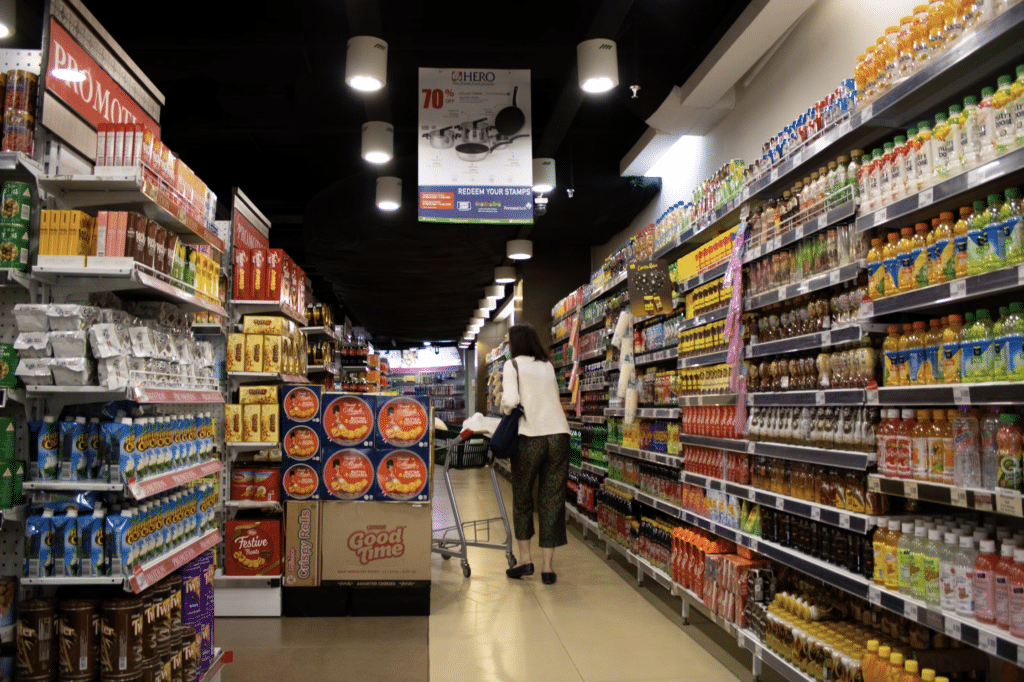Nov 30, 2023
—
The consumer packaged goods (CPG) industry is elbowing through a tight market. Between pressing supply chain challenges, shifting shopper preferences, and steadfast competition—more brands than ever are looking to stay top of mind when the average consumer reaches for their wallet, both in stores and online. But how do you cut through the clutter and…

The consumer packaged goods (CPG) industry is elbowing through a tight market.
Between pressing supply chain challenges, shifting shopper preferences, and steadfast competition—more brands than ever are looking to stay top of mind when the average consumer reaches for their wallet, both in stores and online.
But how do you cut through the clutter and ensure that you’re #1 in your target audience’s thoughts in such a highly saturated playing field?
The answer lies in a razor-sharp CPG strategy, one that’s not just reactive but proactive. One that leverages deep shopper data to align with the pulse of modern trends. One that puts the consumer at the forefront of every sales initiative, every time.
2023 and what’s ahead will create waves of performance marketing opportunities for smart marketers to reach the modern shopper. But to maximize both your CPG marketing strategy and your sales, you’ll first need to understand the current market and how to keep up with it.
The CPG industry is as impactful for global advertising shares as it is essential for consumers.
Amidst current economic uncertainties, CPG brands continue to monumentally invest in their awareness, reach, and targeting efforts through everything from print to performance TV. In 2022, CPG accounted for over 12% of overall ad spend share in North America, with advertisers dishing out $8.5b ($773mm per month) to their campaigns.
A strategic allocation of budgets speaks volumes about where CPG brands anticipate the highest return on investment. 2023 MediaRadar research shows CPG advertisers put their trust in and their dollars most towards:
In 2022, the CPG industry also held a considerable portion of the share of spend on devices in categories such as:
Today’s CPG marketers are coming face-to-face with the effects of global industry constraints.
Nowadays, finding success in your sales means conquering the challenges of the economy and the hesitant shopper.
The war for shelf space is on. But do you have the stock to meet shopper demand?
2023 Deloitte research found that 62% of CPG executives anticipated challenging supply chain issues. And 70% of consumer food and product manufacturers indicated this year to be more stressful than the past 5 years.
Factor in the classic law of supply and demand, and CPG brands are feeling the heat. 80% of companies are planning price increases this year, on top of already anticipated record-setting costs.
Inflation adds flame to an already burning fire, forcing consumers to rethink their shopping habits.
When prices hike, consumers recoil—into the hands of cheaper, private-label “store” brands, like Amazon’s Goodthreads or Walmart’s Great Value.
This creates an added layer of competition that many consumers come to know as the “smarter choice.”
CPG advertisers not only have to accommodate industry challenges but also shifting buying trends.
To effectively get your brand in front of your target audience, you need to place yourself in the everyday shopper’s shoes and learn how to think like your ideal buyer.
Your consumers are shopping online, and your competitors are meeting them there.
Increased digitization in an already digital world is driving more brands than ever to shift their focus to online markets. With that influx, online distribution channels are expected to grow by 8.3% CAGR (compound annual growth rate), from 2020 to 2027.
Primary online marketplaces that your shoppers (and competition) frequent range from Amazon and Walmart to direct-to-consumer (DTC) websites and social media.
Inflation and pressing economic challenges are changing buying habits beyond the push to private-label products.
Despite CPG products like food and household items remaining in high demand, consumers are finding ways to scale back on consumption.
44% of shoppers are moving from ordering online to cooking food at home, with 40% focused on minimizing waste. What’s more, 31% of buyers are only purchasing if a product is on sale, and 26% have stopped buying unnecessary items altogether.
Convenience is comfortable. With more people shopping from home, more people are expecting an ordering experience that is as timely as it is seamless.
According to the 2020 Flexe Omnichannel Consumer Survey:
Subscription-based models are creating a new standard for shoppers.
Instead of repeatedly purchasing the same skincare products or fresh veggies each month, buyers want their regularly used products delivered straight to their door.
Marketers worldwide are taking note of this newfound preference. In 2023, subscription models are projected to remain a top priority for brands looking to drive retention.
COVID-19 may have temporarily killed in-store shopping, but today’s buyers are the driving force behind its revival.
According to data from 2022, 32% of shoppers said they would like to return to trying out products in-store, as opposed to behind a screen.
With brick-and-mortar shopping brought back into the ring, CPG brands are re-emphasizing their appeal to both traditional and digital buyer personas. This unique shift in consumer and brand focus opens countless doors to increased advertising opportunities—and the mighty hand of competition.
The brands that enforce an informed and strategic media activation approach are the ones that will stay one step ahead, even as shopper preferences inevitably continue evolving over the next few years.
From traditional billboards to Hulu, advertising to the right market is all about the right data.
CPG brands that make use of best-in-class purchase, demographic, and behavioral data (through everything from the Kroger Private Marketplace to Drizly’s verified purchase data) are the ones that perform best in reach and targeting.
Know what your shoppers are shopping for and what they’re purchasing, and you gain a skeleton framework for your ideal buyer persona. Then, you can create and optimize your campaigns to resonate most with that data-backed target audience.
Today’s top U.S. retailers have SKU (Stock Keeping Unit) data, letting you see real-time stock availability per location.
Leveraging this type of data gives you both campaign optimization opportunities and media investment efficiency. In addition to only serving ads to locations where your products are available, you can use this data to tap into the power of competitive conquesting.
Identify and target locations where competitive items are out of stock by spotlighting your product as an alternative. When consumers make the purchase, you lock in your opportunities to gain another lifelong customer.
At Digital Remedy, we take a market-driven approach to our CPG strategies.
From Google Display & Video 360 to The Trade Desk and beyond, our partners offer streams of audience insights to drive your brand’s scale and reach. With us as your media buying and performance marketing partner, you’ll gain high-engagement creative, branding, and performance solutions to be seen where they matter, plus meticulous measurement and insights into what’s driving your performance.
Learn how to sell to the modern CPG shopper with confidence. Speak with a member of our team to see what Digital Remedy’s performance marketing solutions can do for your bottom line.
For the latest industry trends and insights, check out our blog and sign up for our monthly newsletter.
Related Posts

As new tariffs increase economic uncertainty, advertisers are under intense pressure to stretch their budgets and prove the value.

The way people consume television has changed dramatically. With audiences shifting away from traditional cable and toward streaming services,.

Staying ahead as a full-service digital marketing agency is no small feat. Between evolving consumer behaviors, rising client expectations,.